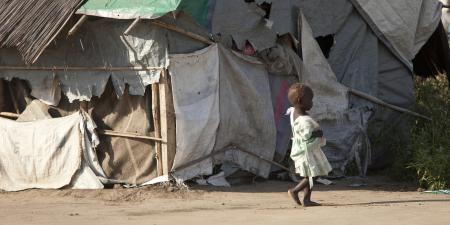The mention of an intersection between trade and health surely brings to mind the recent swine flu pandemic, SARS, and the threat of other diseases that have disrupted global commerce. These are simply symptoms of far deeper trade and health issues that will spur debates—and one hopes, progress—in this decade. Debate has been fueled by the growing use of expensive drugs for treating HIV in developing countries. This is but one area where the intersection of trade and health has emerged as a life-saving—or life-denying—issue. Increasing regional and global trade impacts health in manifold ways, however, from policies about medical personnel working abroad to government choices about using locally produced food when more nutritious ones might be available from other countries.
In the 1990s, it was still common to see the conflation of global trade and humanitarian discussions. Market forces were declared patently destructive and desperate measures were called for: keep doctors in place, provide people with the drugs they need regardless of price, patents, or provenance. Recent developments—most importantly the flow of money, beginning in 2002, from the Global Fund to Fight AIDS, Tuberculosis and Malaria, among other funding sources to actually pay for health personnel, drugs, and compulsory licensing—have led the humanitarian discussion to focus on global trade once again. As health workers continue to migrate and drug effectiveness diminishes, however, the humanitarian debate of the late ‘90s—should patents be broken to ensure the poor get the drugs they need for AIDS and malaria?—will rear its head again with potentially serious consequences for research and development, on one hand, and for saving lives, on the other. Although there are myriad areas where these issues will enter the policy debate, I examine just three of them here: drugs, commerce in services, and commerce in products.
The Drug Trade
Before the Global Fund to Fight AIDS, Tuberculosis and Malaria and the Bush Administration’s support for related causes, the relative impact and market size for expensive biotech-engineered drugs were miniscule. With the advent in particular of drugs for HIV, health advocates started posing serious and compelling questions to big pharma about what size market would drive prices down. Big pharma argued that poor countries did not have adequate financial resources to pay for the drugs—even at discounted prices. The activists countered that if all the people in need received drugs and international financing mechanisms helped pay, the scale of drug production would drive prices down substantially. Now that we’re several years out, it’s clear the activists were right: the bottom of the pyramid can sustain pharmaceutical economics previously thought to be impossible. The leading drug combinations that cost $10,000 to $15,000 in 1996 today cost less than $100 [1]. These emerging socioeconomic and demographic trends are swiftly revealing a central irony that was once merely the concern of AIDS activists: good drugs are patent-protected, and those patents mean big pharma can keep prices (and quality) high.
This patent debate takes place against a tragic backdrop: WHO estimates that currently one-third of the world's population lacks access to essential drugs, and that over 50 percent of people in poor countries in Africa and Asia do not have access to even the most basic essential drugs. Worse yet, counterfeit drugs, which often contain few or no active ingredients and may actually be harmful to health, are a major problem in many developing countries, notably in sub-Saharan Africa and Southeast Asia. The TRIPS Agreement, which requires WTO members to establish minimum standards for protecting and enforcing intellectual property rights, contains several provisions that enable governments to consider immediate and longer-term public health implications when applying their intellectual property regimes. It also provides for some flexibility in the implementation of the agreement itself, allowing countries to limit patent owners’ exclusive rights under certain conditions, for instance by granting compulsory licenses and allowing parallel importation of patented products. This flexibility was reaffirmed by WTO members at the Doha Ministerial Conference. Still, a basic tenet of the TRIPS Agreement is to encourage technological advancement through research and development by means of patent and copyright protection, and governments may lobby on behalf of their corporations if they feel member states are violating the agreement.
Specific to the issue of health and trade, while the TRIPS Agreement should enhance incentives for R&D into new drugs, there is also concern that more stringent patent protection will lead to drug price increases. Although there were some conflicting views about the conditions under which the flexibility provided by the TRIPS Agreement could be applied, the Doha Declaration on the TRIPS Agreement and Public Health helps clarify this issue: where patent protection confers pricing power for drugs of vital public health or life-saving importance, differential pricing can be used as one way of ensuring that prices in poor developing countries are as low as possible; higher prices in rich countries continue to provide incentives for R&D. The TRIPS Agreement does not stand in the way of such arrangements.
TRIPS only covers the drugs that were in existence at the time the agreement was finalized, however. Since then, newer, more effective drugs have come onto the market and first-line drugs’ effectiveness has decreased. There is and will continue to be increased attention to the newer and more expensive companion drugs. Further, a major element of TRIPS calls for even poor nations to improve their ability to police intellectual property rights. Thus, there’s an expectation that the old drugs that become generic will sell at low cost while emerging drugs will command a premium. One can imagine that, as pathogens become resistant to current antibiotics, anti-malarials, and HIV therapy, the newer drugs will command steep prices and stir debate again.
It is perhaps not unfair to say that the WTO and WHO, large international organizations whose ideologies have been largely if not completely influenced by developed countries, have provided an unequal playing field with respect to health and trade agreements. Even though we have discussed ways in which the TRIPS and Doha agreements have provided a safety net to developing countries, the fact remains that poor people do not have access to life-saving and even life-sustaining drugs in part because of the structure of pricing and patent protection put into place by the WTO and WHO. In my view, the failure to create competent health systems plays a far more profound role in the lack of access to essential medicines, but, nonetheless, WTO and WHO will be under pressure in years to come to lower prices for the poor—regardless of the state of individual countries’ health systems.
Food Fans the Flames
Pick up any newspaper or magazine, and it is immediately obvious that products get from one point on the globe to another more easily than ever before. Coffee from Vietnam, cars from South Korea, vanilla beans from Uganda—these business interactions are woven into the tapestry of today’s trade. While our clothes are clearly labeled with the name of the country where they were produced, the source of our food is less obvious. This is an important point: where a country gets most of its food greatly affects both the health of its economy and the health of its people. Considering the massive subsidies that developed countries are able to pay their farmers, there is a fair bit of food “dumping” to developing nations. On the one hand, this can be a good thing—hungry people in poor countries can get food and powdered milk at an extremely low cost. On the other hand, it can and usually does bankrupt local farmers, who cannot compete with the prices that developed countries can charge for these items.
Perhaps the starkest example of this is the way the corn market has been altered by the North American Free Trade Agreement (NAFTA). The U.S., which pays massive subsidies to its corn farmers, has flooded the Mexican corn market, ostensibly putting most Mexican corn farmers out of business. Mexican consumers are able to buy corn at a low price, but at what cost? Yet, if one is evaluating a nation’s health from the perspective of how much food its population can buy, then an argument can certainly be made for free trade policies.
From my perch here in Rwanda—importer of 5 million Ugandan eggs per week and of millions of liters of processed milk annually—the fall of trade barriers presents both opportunity and challenge. The challenge is clear: conventional and antiquated producers face the wrath of market dynamics from many, many miles away. A simple dairy farmer with a few cows in Rwanda is competing against larger dairy factories with access to capital and technology in Uganda. At the same time, the very same farmer may be producing a surplus of cassava which he can easily send by bicycle to the market in Burundi. It’s not a zero-sum marketplace, and those who are skilled in finding niches are likely to emerge wealthier, and healthier, for their efforts. This brings us to the final area of trade flows, and one of the most debated: medical brain drain.
Losing Our Minds
It’s no secret that there has been massive migration of trained doctors and nurses from their poor home countries to wealthier ones for decades. Well-trained personnel follow their wallets, and for years their wallets at home have been precariously thin. Monetary incentives and pro-migration policies for professionals make it attractive for health care workers to leave rural areas and even urban areas in poor countries to respond to the need for doctors and nurses in rich nations.
When it comes to the impact this has on poor people, especially in developing countries (but also in depressed areas of developed ones), the results are obvious; even if Western donors provide money for state-of-the-art clinics, there may be no doctors or nurses to staff them. It is unsustainable for international nongovernmental organizations (NGOs) to plug this hole by raising salaries to attract staff. There are two clear ways to address this untenable situation.
First, nurses and doctors trained in developing countries should have time in the field built into their education and post-education plans. In exchange for commitments to working in district hospitals and health centers for a few years, student debt can be forgiven while opportunities to help the poor are provided. Beyond that, it’s considerably tougher to address retention. Borders are porous and money talks. It’s high time that ministries of health started investing in retention. That means offering salaries that are competitive—not necessarily in the lucrative international marketplace, but certainly in the lucrative local private marketplace. Just this past week I was in a superb hospital in rural Rwanda where the director informed me that she had lost 3 out of her 15 doctors to the private sector in the past year; she simply doesn’t have the funding to pay them. The amount of money needed to retain these doctors and bring nurses out of the cobwebs is not a fortune, but it is essential. It’s time to stop blaming rich countries for brain drain and start taking responsibility at home. Health ministries, even in terribly poor countries, need line items on their donor budgets for competitive personnel benefits. There’s no other option.
Toward Healthier Trade
To protect health amid rapidly expanding trade relations, governments in developing countries will have to find a middle ground between reaping the benefits of pro-trade agreements and making sure their needs are not being subsumed by those of the big players on the world stage. To this end, trade incentives must be carefully analyzed, and poor nations need to lobby the WTO when they disagree with trade policies. Allowances must be made to support poor countries’ access to medications—especially life-saving drugs—at reduced costs. Still, it is clear that free-trade agreements provide great opportunities to developed and developing countries alike, and governments in the Global South should devote more energy and resources to shoring up local markets, particularly for the products in which they have a comparative advantage. Such change demands a new breed of policy makers who are savvy about the marketplace—from brain drain to poultry imports. Business as usual—the painfully slow decision-making of ministries and businesses alike—will have to be replaced with dynamic decision processes that treat food, drugs, and people like the commodities they have become. WTO and WHO must work with countries to navigate the pitfalls of this fierce new marketplace and replace their old style of business too. The health and well-being—the very future—of the poorest depends on the ability of all to recognize that the world is, after all, one huge brimming marketplace where deals can frequently result in life or death.
References
-
AVERT.org. AIDS, drug prices and generic drugs. http://www.avert.org/generic.htm. Accessed February 8, 2010.



